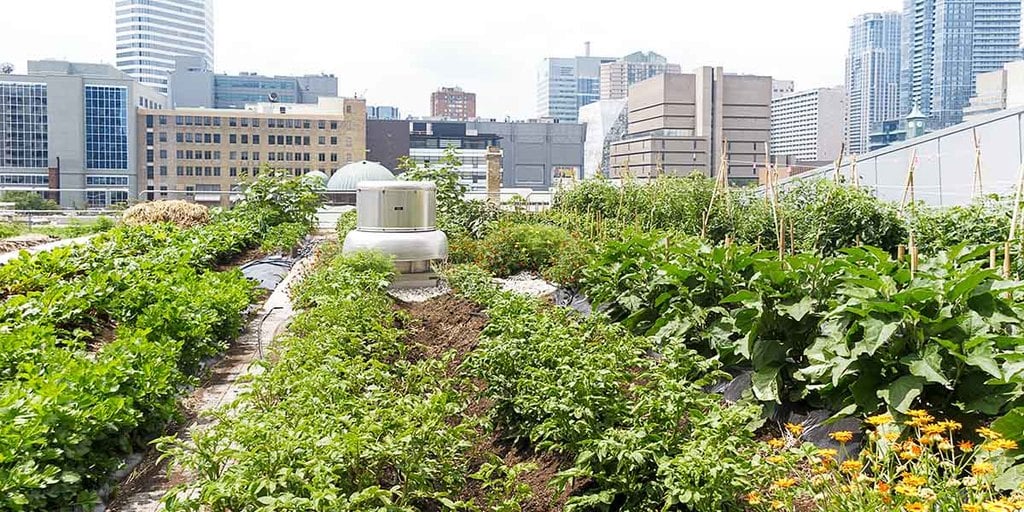Some Known Details About City Blooming
Some Known Details About City Blooming
Blog Article
City Blooming Can Be Fun For Anyone
Table of ContentsAll about City BloomingThe Only Guide for City BloomingRumored Buzz on City BloomingCity Blooming Things To Know Before You BuyThe smart Trick of City Blooming That Nobody is Discussing
Intrigued in expanding food for sale in the City of Chicago? Thinking of beginning a community garden? Changes to the Chicago Zoning Statute permit agricultural uses like neighborhood gardens and metropolitan ranches in lots of components of the city. Below is a listing of regularly asked concerns relating to the policies and regulations that growers ought to consider when planning a city farming project.
The zoning change does not customize any various other codes dealing with composting, building permits, purchasing or leasing City had residential or commercial property, company licenses or environmental contamination. There are existing codes that control these issues and they remain in complete result and may be relevant to your task. Area gardens are normally had or handled by public entities, civic companies or community-based organizations and maintained by volunteers.
Urban farms expand food that is meant to be offered, either on a not-for-profit or for-profit basis. Due to their industrial function, city farms need a company certificate.
The Best Strategy To Use For City Blooming
Composting is allowed however just for plant product that is created and made use of on website. The quantity of garden compost product can not exceed 25 cubic yards at any type of offered time according to the standards in 7-28-715 of the City's Municipal Code. Yes. Due to the fact that the dirt at most brand-new yard websites needs modifying, garden compost, dirt, wood chips, or other materials can be acquired to build or improve the expanding room - garden care.

If a structure permit is called for then the hoophouse will be thought about an accessory structure. You can figure out more concerning the structure permit demands by speaking to the Department of Structures. The 25,000-square-foot size limitation is planned to prevent a single community garden from controling a given block or interfering with the block's existing residential or commercial personality.
The limit does not use to gardens found in Public Open Space (POS) districts. Can there be more than one neighborhood yard that is 25,000 square feet on a solitary block? Fencing is not called for, nonetheless, gardens that have big vehicle parking locations may be called for to install fence or various other landscape design features.
A Biased View of City Blooming
B1 & B2 areas need that all industrial usage tasks be performed indoors. Is fence needed for urban ranches? Fencings might be called for, along with landscaping and testing, for certain car parking areas and outside job or storage space areas depending on location and the certain activity taking area.
Urban ranches call for building licenses and zoning authorizations prior to building (balcony and patio garden design). Other types of city review may be called for depending on certain frameworks, activities, dimension, landscape design, licensing, public heath and stormwater monitoring concerns.
The Department of Company Affairs and Consumer Defense can assist figure out the details type of business permit that's needed. Off street auto parking is required for many business jobs in Chicago. The required number of car parking spaces is based on the number of workers working on site and not the square footage of the expanding area.
5 Easy Facts About City Blooming Described

An urban ranch can offer compost product generated on website, nonetheless, the procedure should abide with the laws in 7-28-715 of the Chicago Municipal Code. Aquaponic systems are enabled indoors on metropolitan ranches in many zoning districts.
As much as 5 hives or swarms of honey might be kept as an accessory usage. Nonetheless, beekeepers should register with the Illinois Division of Agriculture. For additional information about the proposed zoning change you may contact the Division of Real Estate and Economic Development, Bureau of Preparation and Zoning at 312.744.8563.
Farming in cities and urban areas A metropolitan farm in Chicago. Urban agriculture refers to numerous practices of growing. https://dzone.com/users/5164299/cityblooming.html, handling, and distributing food in urban locations. The term additionally puts on the area tasks of pet husbandry, tank farming, beekeeping, and horticulture in a city context. Urban farming is differentiated from peri-urban agriculture, which takes place in backwoods beside suburban areas.
The Facts About City Blooming Uncovered
, who look for to develop social networks started on a common ethos of nature and community holism. These networks can establish by means of official institutional support, ending up being incorporated right into neighborhood community planning as a "shift community" motion for lasting city development.
Some of the initial evidence of city farming comes from Mesopotamia.
Report this page